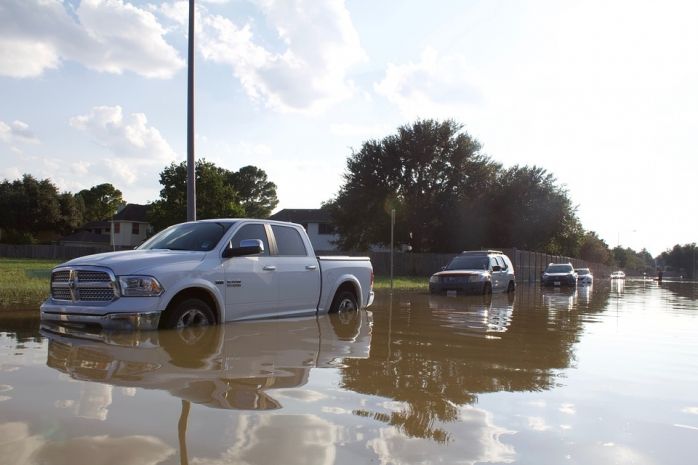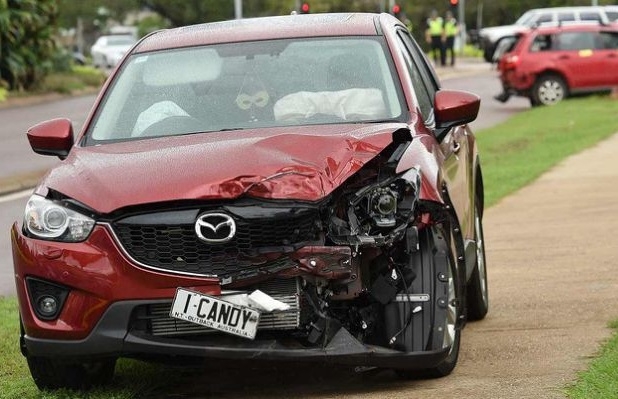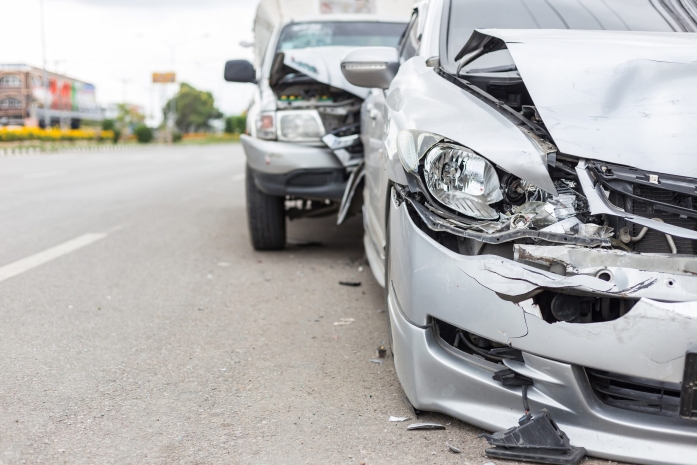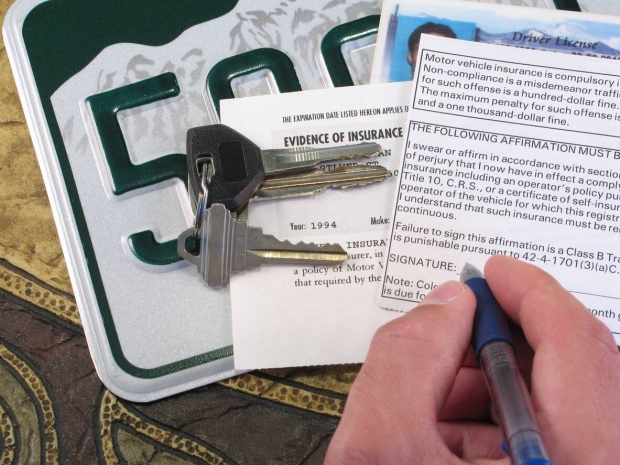An accident or a natural cause, either one can cause flooding in your car. Insurance might cover the damage, but what should you do with a flooded car? It has a lot of water that damages its internal and external parts.
In this article, you will find out what to do if your car gets flooded, including what to do immediately, the damages inflicted, its repair, and whether it is worth repairing and selling a flooded car.
4 Things to Do If a Flooded Car Won’t Start
The first step to fixing a flooded car is to assess the damage done. Depending on the level of water damage, it may be possible to fix a water flooded car, but it won’t be easy, so it helps if you’re mechanically inclined. If you’re not, it’s better to have a trusted mechanic look at it. As for assessing the damage, you can take these steps first:
1.Check the high water line
If your car were caught in a flood, the water would have sediment and dirt in it. Once the water recedes, it will leave a mark along the outside and inside of the car. Knowing how much of the car was submerged in water will be the first step in assessing a car that got flooded. Take a look inside the engine bay to see how much of the engine was submerged. Look at the car's interior to see how much water got inside and if the electronics were underwater.
2. Try to turn on the electronics but NOT THE ENGINE
If your car engine is flooded with water, starting it will only cause more damage, so DO NOT try to start it. If the electronics (turn signals, radio, windshield wipers, headlights, etc.) turn on, you may have gotten lucky. On the other hand, they may work now but will continually fail as time goes on. It’s more likely than not that if any electronics were submerged, your flooded car wouldn’t start and will need to be replaced entirely.
3. Open the windows or doors
This will help evaporate the water, which will prevent mold from growing.
4. Check the oil dipstick
If you find water in the dipstick, it means water has infiltrated the oil reserve and very likely other fluids like transmission fluid, fuel, coolant, brake fluid, etc. If there is water in any of these systems, you will need to do a complete flush of the system before restarting the engine to prevent further damage.
If you try to undertake the process of clearing water flooded engine, you will need to remove the spark plugs, change the oil and filter, crank the engine with the spark plugs out, refill the oil, drain the fuel if there’s water in it (and there usually is), just as a start. As you can see, fixing a water-flooded car engine is a very complicated process. It’s definitely more complicated than what your average person should attempt themselves.
If you’re not a mechanic, it’s doubtful that you’ll be able to do this yourself without causing more damage. When a car is flooded with water that won't start, it’s a huge undertaking that should really only be done by a mechanic. That said, most mechanics won’t even try to fix it because of how difficult it is and will suggest filing an insurance claim instead of asking them, “Can you fix a flooded car?” A mechanic that fixes a flood-damaged car is under serious liability should any component fail and end up injuring the passengers, so it’s unlikely they will even try.
Is it Worth Fixing a Flooded Car?
If your car was flooded, there is a question that every person comes to: what If my car was flooded, is it totaled? Flood causes serious damage and repairing it takes up a lot of hard-earned money. Fixing a flooded vehicle entirely depends on what part of the vehicle has been incapacitated.
Let’s take a look at the pros and cons of repairing a flooded car.
Pros:
- Minimum damage caused by flooding can be easily fixed. Damage just to interiors can be easily repaired.
- If flooded with freshwater, the chances of reviving the automobile are higher. Freshwater causes less damage to the vehicle compared to saltwater.
- A fixed flooded vehicle can easily be put up for resale at a certified dealer for a suitable price.
Cons:
- The maximum damage caused by a flood can burn a hole in your pockets. Damage to the mechanical components is permanent and could be fatal. A flooded automobile may be repairable but comes with a huge price tag.
- Water entering the automobile will certainly damage the electrical system, moisture will completely ruin the wiring, music systems, AC, automatic windows, mirrors, power steering, and other electrically operated features. Fixing it can be quite expensive.
- With heavy interior damage, it might be a better idea to dump and buy a new one.
Saltwater vs. Freshwater
There are two types of water, fresh and salty. Both have their own characteristics and effects on the submerged auto. Here’s a detailed analogy:
- Saltwater: Saltwater acts as an acid to the metals, corrodes them quickly. Vehicles flooded with saltwater will get corroded, the electrical wiring will go berserk, electrical motors will crash and stop working. Damage caused by saltwater is extreme and expensive to repair.
- Freshwater: In freshwater, a vehicle doesn’t face much stress. Drain it completely, replace the fluids and filters, check the battery, and it might be good to drive. Freshwater would not cause corrosion. Therefore, the engine will be good as new. Just don’t forget to void the excess water.
It is recommended to sell your flooded car, depending on the intensity of the damage. However, if you decide to sell junk cars, you should contact your local junk dealer to get the best price for your old car.
Is it Illegal to Sell a Flood-Damaged Car?
Technically, it isn’t illegal to sell a flood-damaged car. However, selling a flood-damaged car without disclosing this information to the buyer is illegal and considered auto fraud. The United States has many “lemon laws” that protect the consumer, and if you try to sell a flooded car without disclosing this information (and even having the buyer sign an agreement acknowledging this), you can be sued.
It’s unlikely that trying to get rid of your flood-damaged car to a dealership, private buyer, or anyone other than a junk car buyer will be a simple process — and there are reasons to avoid doing so. If you get sued, whether the buyer wins or not, you will be faced with having to go to court to defend yourself.
So while technically it is not illegal to sell a flood-damaged car, it’s very unlikely that it will be a simple process. “Can you sell a flooded title car? Yes, you can, but a salvage titled car is just as complicated as the above process because the consumer is always protected by United States “lemon laws.”
Where Can I Sell My Flood Damaged Car?
If you’ve asked yourself “how to fix a flooded car?” and decided it’s not worth fixing, and you would rather ask yourself “What is the best way to sell a flooded car?” JunkCarsUS can help.
Selling your flooded car to a junk car buyer is significantly easier and safer than trying to fix a flooded car. JunkCarsUS will give you top dollar for your junk car totaled by water damage. The cost of repair will greatly outweigh the amount of cash you can make by selling it to us. If you want to know how to sell a flood damaged car, give JunkCarsUS a call at (855) 547-1550 and get your instant quote today.
What Happens When Your Car Gets Flooded
When a car gets flooded, the water level goes up high and it gets submerged. There are various component damages that can be caused by water such as:
Damage to the Electrical System
Moisture is the number one enemy of any electrical element. When a vehicle gets flooded, the electrical system sustains the most damage. Failures of systems like:
- Electrical Control Unit (ECU);
- Headlights, brake lights, indicators, and other lights;
- Air conditioner;
- Power windows, locks, seats, and steering;
- Music player;
- ABS system;
- Fuses.
Damage to the Engine
Engine is the most critical part of any vehicle. When the water enters the engine, it can inflict damage to the cylinders, pistons, or air intake, causing the engine to shut completely and be of no further use.
Interiors
Interiors of the automobile can quickly get infected with fungus and get moldy. Due to the high amount of moisture and enclosed space, molds spawn within days, which may cause respiratory or any other impact over the health of the person driving.
It is advisable to first let the interior dry out before it is further cleaned and sanitized for hygiene, especially parts such as:
- Seats;
- Floor mats;
- Door panels;
- Air conditioner;
- Trunk.
Rust-riddled Car Parts
The majority of automobiles are made with metals, and a rusted part can drastically weaken its integrity. Rust can take months or years to set but once it does, it can easily spread to other parts, therefore it must be replaced or repaired as soon as possible. Here is the list of little rust-prone locations or parts:
- Engine;
- Fuel tank;
- Chassis;
- Trunk;
- Alloy wheels;
- Brake pads and disc;
- Screw and bolts;
- Frame.
Brake Breakdown
After being submerged in water, the rubber pads of the brake tend to lose their grip. Before driving the automobile after it’s flooded, it must be inspected by a mechanical expert.
Car Fluids
Fuel, coolant, brake oil, engine oil, clutch oil, power steering fluid — contamination of these fluids with flood water can cause serious damage to the car. Checking its fluid is highly recommended in such conditions.
What Should You Do Immediately?
In a moment of panic, the only question that arises is what to do with a flooded car? Here’s what you do:
- Do not start the vehicle until it is completely drained out, and inspected thoroughly. The presence of water in any part of it could cause more damage if tried to start.
- Remove the battery power supply, disconnect the cords to avoid any electrical shock.
- Immediately try to dry the car as much as possible to avoid long exposure to the water.
- Drain and change the fluids, although a car might work with water infused fluids. It is advised to replace the fluids and not drive the auto or even start it.
- Recommended contacting the insurance company that insures the car, reporting water damage due to flooding.
- Call a mechanical expert and arrange to set up an evaluation and inspection of the car to make sure there isn’t any water contamination and is safe to start the car without any possible damage to it.
These are the few steps and precautions to take immediately upon the flooding of a car for the safety of the person and their vehicle.
Best Place To Sell a Flood-Damaged Car
With cars, if they’re damaged beyond repair or not worth fixing it is best to sell them off instead of investing thousands of dollars in them. If you’re wondering where can i sell my flood damaged car, JunkCarsUS is the perfect buyer to help. We buy flooded cars as they still hold some value. A flood-damaged automobile is still worth even if it isn’t running.
Sell flooded cars for junk and part salvage. Repair the fixable parts on a car and sell them to buyers. A heavily flood-damaged auto’s suitable option is to sell and invest it in a new automobile. The best way to sell a flooded car is by visiting JunkCarsUS for more details. We provide the best price estimate for the junk and all the hectic paperwork. It’s hassle-free and a convenient way to sell for cash.
Conclusion
What to do if your car engine is flooded? A flooded vehicle is one of the worst situations to be in. However, it is highly recommended taking the necessary precautions if one lands in such a situation. Avoid starting it, allow it to drain, disconnect the battery, and call a mechanic. Make sure the car has been completely fixed before you start, check the fluids, fuel systems, filters, and electrical systems to avoid any further damage.
Fixing it or not depends on the damage assessed to it, saltwater damages are generally beyond retrievable compared to freshwater. Confused about whether to repair or sell? Either way, if your car was flooded. It is still worth something at JunkCarsUS. Contact us to get an estimate and take cash for totaled cars.
FAQ
What to do if a flooded car won’t start?
First, you should check every system of your car. Verify the line of high water (by the dirt left after the water recedes), attempt to switch on the electronics (except for the engine system), open all the doors (or windows if the first are blocked), and check the oil dipstick.
Is it legal to sell a flooded vehicle?
Yes, it is fully legal. However, it is only permitted if a buyer knows its history. In other words, hiding the fact about car damage caused by water accidents is illegal and be considered auto fraud.
Can a flooded car be fixed?
Mostly, the answer to this question depends on the type and level of water in which a car was flooded. Freshwater, for example, is not as harmful to vehicles as saltwater. Salt water acts like acid on metals, quickly corroding them. Plus, electrical wiring and electric motors will fail and stop working. As a result, saltwater damage is far from simple and often expensive (or even impossible) to repair.





